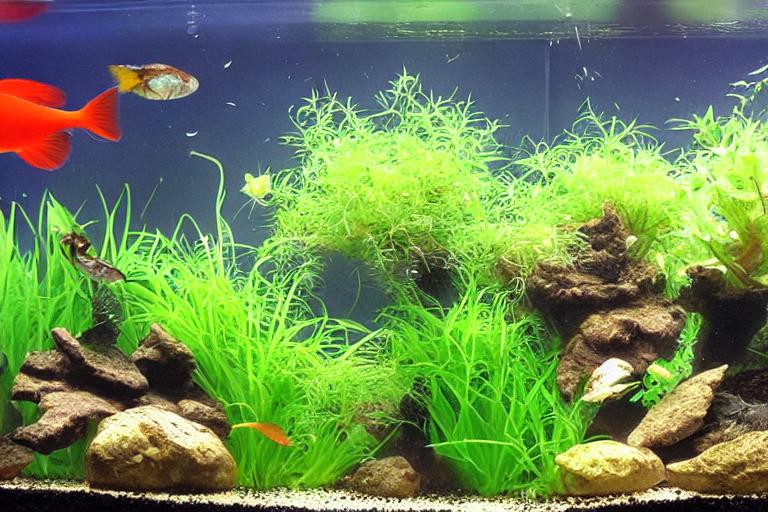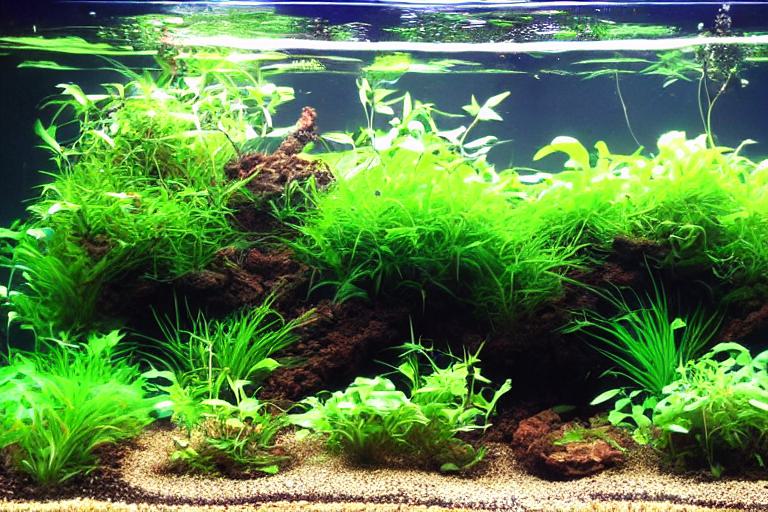If you’ve ever set up a planted tank before, you know that the process of cycling can be a bit of a pain. You have to wait for the nitrifying bacteria to establish themselves in the system, and during that time your plants are sitting in an uncycled tank and are likely to die. But what if there was a way to cycle a planted tank quickly, without all the hassle? In this article, we’ll show you how to do just that.
How to start the cycle in a planted tank
If you’ve never had a planted tank before, the process of cycling can seem daunting. Here is a quick and easy guide to get your tank up and running in no time.
The first step is to fill your tank with water and add your plants. Once your plants are in place, it’s time to add your fish. Start with just a few fish and increase the number over time as your tank matures.
As your fish produce waste, it will start to build up in the water. This waste is full of nutrients that your plants will love. To help the plants grow even faster, you can add a little bit of fish food to the water each day.
Within a few weeks, your tank will be fully cycled and ready for a healthy population of fish and plants.
Start the aquarium cycle with diluted ammonia
When starting a new aquarium, it’s important to cycle the tank before adding fish. This can be done by adding a small amount of ammonia to the water. Ammonia will help to jump start the cycling process by providing a food source for the bacteria that will eventually break it down.
Add the diluted ammonia to the tank and then monitor the levels over the next few weeks. This will help to prevent any sudden spikes in ammonia levels that could be harmful to the fish. To add ammonia to the tank, start with a small amount that has been diluted in water.
This process will help to establish the nitrogen cycle in the tank and will eventually lead to a healthy and thriving aquarium. As the bacteria start to grow, they will begin to break down the ammonia.
Start with some fish food as ammonia source
If you’re looking to cycle a planted tank as quickly as possible, one method is to start with some fish food as your ammonia source. This can be done by simply adding a small amount of fish food to the tank and letting it decompose. The fish food will release ammonia into the water, which will then be used by the plants as a source of nitrogen.
This method can be beneficial because it can help to jump start the cycling process and get the plants growing quickly. However, it’s important to keep an eye on the ammonia levels and make sure they don’t get too high, as this can be harmful to both the fish and the plants. Once the ammonia levels start to drop, you can then add your fish.

A lack of ammonia breaks the cycle
This can lead to a build-up of toxins in the water, which can be harmful to your fish. A lack of ammonia in your aquarium can quickly break the nitrogen cycle and lead to a number of problems for your fish. Ammonia is produced by fish waste and decaying organic matter, and it is essential for the establishment of a healthy nitrogen cycle. Without ammonia, beneficial bacteria will not be able to colonize your aquarium and break down fish waste.
If ammonia is present, it is likely that the nitrogen cycle has been disrupted and you will need to take steps to correct the problem. If you suspect that your aquarium is not cycling properly, it is important to test the water for ammonia levels. Once the ammonia levels have dropped, you can remove the ammonia source and the cycle should continue on its own. Adding a source of ammonia, such as fish food or a small piece of fish, can help jump-start the cycle.
What does a “cycled” planted tank mean?
A “cycled” planted tank is one that has been set up and allowed to go through the process of cycling. Cycling is the process by which the tank’s nitrifying bacteria establish themselves and begin to break down ammonia into nitrites, and then nitrites into nitrates. This process can take several weeks, during which time the tank’s ammonia and nitrite levels will rise and fall as the bacteria populations adjust.
Once the tank has cycled, it will be able to support a variety of plant and animal life. Plants will help to further improve water quality by absorbing nutrients and providing oxygen through photosynthesis. The nitrifying bacteria will continue to break down ammonia and nitrites, helping to keep the water quality high and preventing algae growth.
A well-cycled tank will be healthier and more beautiful, and will provide a lifetime of enjoyment. Cycling a planted tank can be a bit of a daunting task, but it’s well worth the effort.

How to speed up the nitrogen cycle
This process can take anywhere from a few weeks to a few months, depending on the size of the tank and the method used. One of the most important things to do when setting up a new planted tank is to cycle the tank.
There are a few different ways to cycle a tank, but the most common is to use fishless cycling. This method uses ammonia to jump start the process and can be done in as little as two weeks.
To speed up the process, there are a few things you can do. This will help to speed up the growth of the beneficial bacteria. First, add a larger quantity of ammonia than usual. Secondly, add a bacteria starter culture to your tank. This will help to jump start the process.
Finally, keep the tank at a higher temperature. This will also help to speed up the growth of the bacteria. By following these simple steps, you can cycle your tank in as little as two weeks.
Frequently Asked Questions
1. How often should I cycle my planted tank?
It is recommended that you cycle your planted tank at least once a month. This will help to ensure that your plants remain healthy and that your tank remains free of algae and other unwanted organisms.
2. What is the best way to cycle my planted tank?
There are a few different ways that you can cycle your planted tank. One method is to simply remove all of the plants from the tank and then replace them with new plants. Another method is to remove a portion of the plants from the tank and then replace them with new plants.
3. How long does it take to cycle a planted tank?
It usually takes about two weeks for a planted tank to complete a full cycle. However, this can vary depending on the type of plants that you have in your tank.
4. What are the benefits of cycling a planted tank?
Cycling a planted tank has a few different benefits. One benefit is that it helps to keep your plants healthy. Another benefit is that it helps to control algae growth. Additionally, cycling a planted tank can also help to improve the overall water quality in your tank.
5. Are there any drawbacks to cycling a planted tank?
One potential drawback to cycling a planted tank is that it can be time consuming. Additionally, if you do not cycle your tank properly, it could result in the death of your plants.
Final thoughts
If you want to cycle a planted tank as quickly as possible, there are a few things you can do. First, you can add fish that are known to be good at cycling tanks. Second, you can add a lot of plants. Third, you can add a bacteria supplement. Fourth, you can do a fishless cycle. By following these steps, you can cycle a planted tank quickly and easily.
